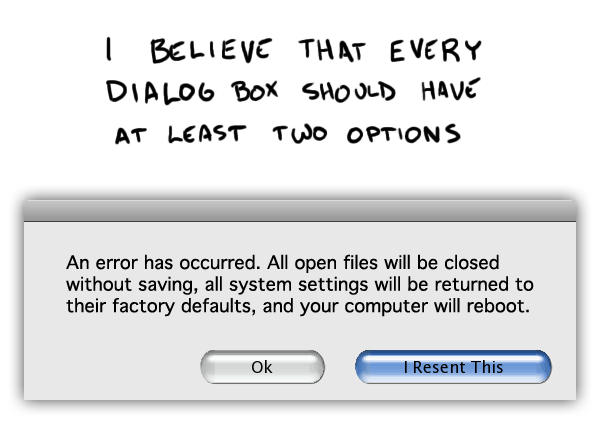From Bad Gods – which I should investigate with the idea of signing up to – comes an important note about GUI design and computer philosophy.
“I believe that every dialog box should have at least two options” makes a lot of sense to me. How often do you click OK when you’re not really OK with the option?

Who invented computer error messages?
Error messages have existed since the early days of computing, dating back to the 1940s and 1950s. However, they were initially technical and geared towards developers rather than end-users. As computers became more user-friendly, error messages evolved to become more comprehensible. Nowadays, they are an essential component of computer software and play a critical role in helping users troubleshoot issues and resolve errors.
Some of the earliest error messages were displayed on punch cards. Punch cards were a type of data storage device that was used in early computers. When a punch card was inserted into a computer, the computer would read the data on the card and try to execute the instructions. The computer would display an error message on a printer if there were an error.
In the 1960s, computer monitors began to be used. This allowed computers to display error messages on a screen, which made them more visible to users. Error messages also began to be more user-friendly, often accompanied by illustrations or icons to help users understand the problem.
Today, error messages are an essential part of computer software. They help users to troubleshoot problems and resolve errors. Error messages are typically displayed in a pop-up window, providing information about the error, such as the type of error, the location of the error, and possible solutions. Error messages can be frustrating, but they can also be helpful. By understanding error messages, users can learn more about how their computers work and how to fix problems.
Let us know what you think in the discussion area below.

